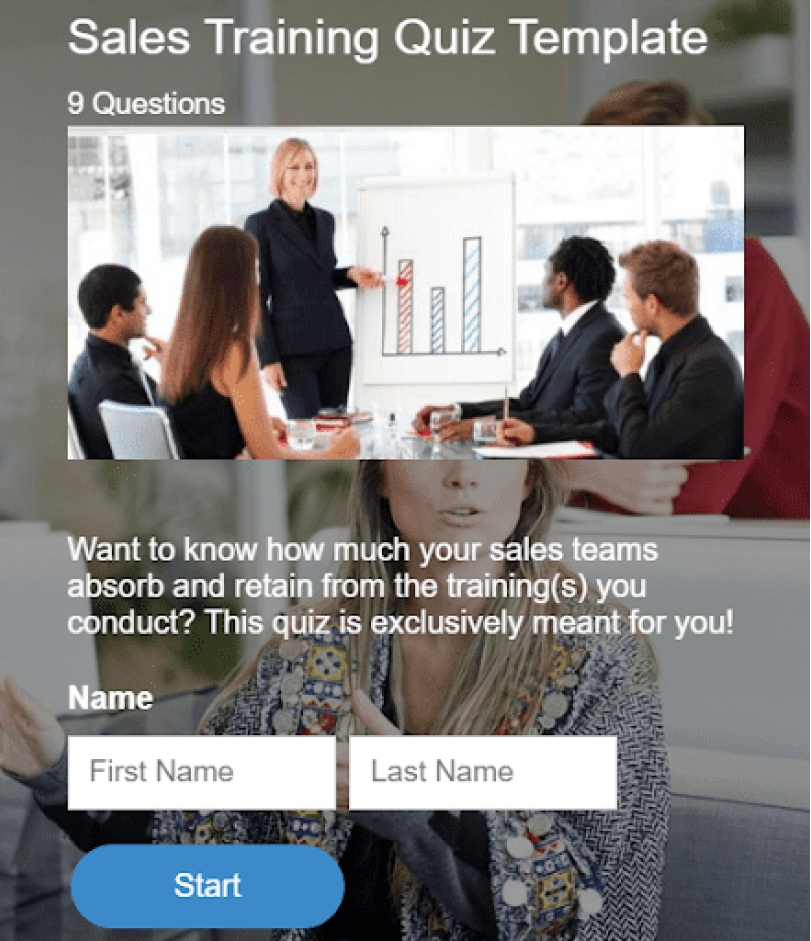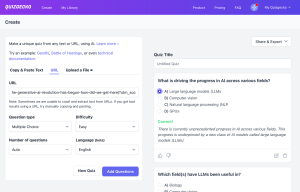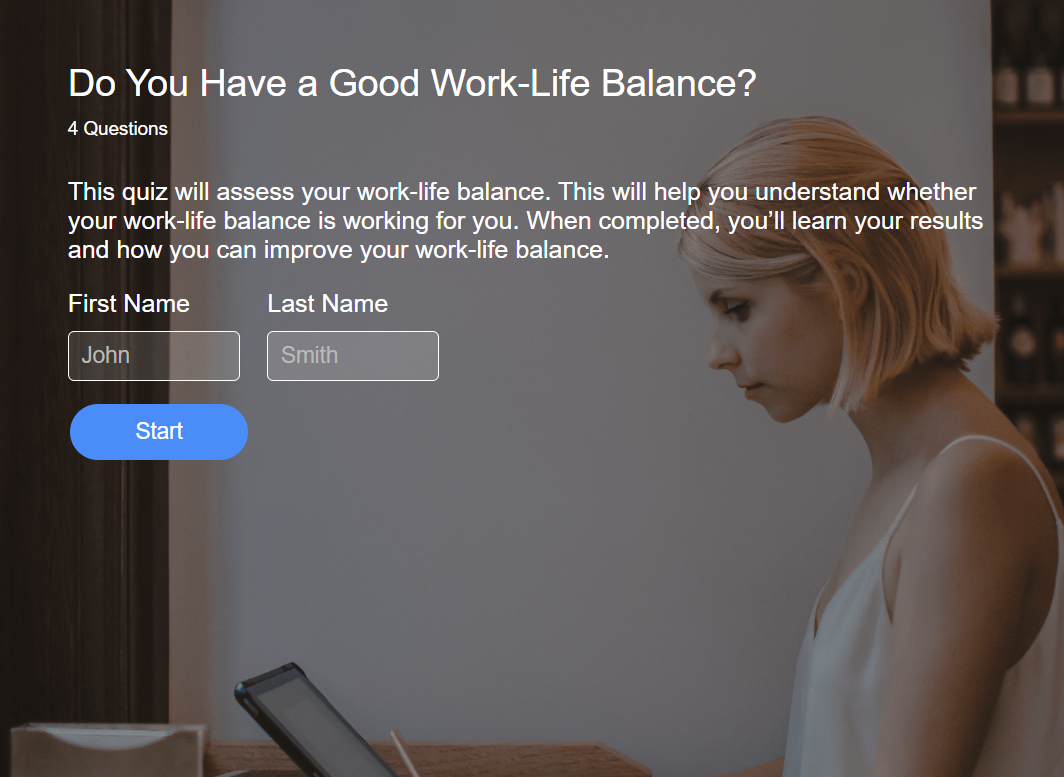A bad hire can cost you almost $15,000, so think about what that does to your budget and team morale.
In this article, we will dive into 8 proven recruitment assessment methods so you can get a better sense of your job applicants’ skills and fit for the role. Plus, we will explore best assessment practices to help you secure top talent.
By the end, you will be ready to improve your recruitment process and make informed hiring decisions that can uplift your whole team.
8 Tried & Tested Recruitment Assessment Methods
Take notes on the actionable points, compare them to your current recruitment process, and think about how you can improve using these.
1. Build An Adaptable Workforce With Emotional Intelligence (EI) Tests
Measure your candidate’s ability to manage their emotions and understand others’ feelings with these EI tests. They help hiring managers find the most qualified candidates who align with company culture.
Use these tests to Identify soft skills like:
- Empathy
- Teamwork
- Resilience
- Adaptability
- Communication
You need these if you want to build a thriving team in dynamic work environments.
How To Implement
Create pre-employment tests on emotional intelligence to gauge how well your applicants understand emotions and react in various situations. Here are questions to get you started:
For more question ideas, simply search about EI tests, like Truity, on Google. To create the quiz, you can use ProProfs Quiz Maker. You can choose from our quiz library of 100,000+ ready-to-use quizzes, generate quizzes in seconds with AI, or create your own quiz.
Plus, ProProfs Quiz Maker offers many question types so that you can build highly insightful assessments.
For example, you can use the audio or video response question types to conduct interviews in a flexible way.
With these question formats, you can hear the candidate’s tone, emotion, and expression. You can also implement role-playing exercises wherein you let candidates act out situations to demonstrate how they handle stressful environments and interact with others.
Since this can be a research-heavy task, hire a virtual assistant who can handle the legwork and compile a list of questions and role-play scenarios for you. This way, you can focus on candidate evaluations instead of getting bogged down in prep work.
Best For
In customer service, EI tests help you find employees who can manage difficult conversations gracefully to improve customer satisfaction.
EI tests are also especially valuable in industries like healthcare, where teamwork and empathy are critical. For example, a nurse with high emotional intelligence can better support patients and colleagues.
2. Elevate Analytical Prowess Through Data Analysis Exercises
Data analysis tasks are handy recruitment assessment tools to let you see how well a job candidate can interpret and draw insights from data. It is like a sneak peek into their critical-thinking skills.
Plus, these tasks help you uncover applicants who can think clearly under pressure and adapt to new data fast. You can also use these exercises to test a candidate’s attention to detail.
How To Implement
Define the job requirements and necessary skills. To do this, collaborate with team leaders and other stakeholders to know the key responsibilities and core competencies the role requires. You should also list down what specific tasks the job entails.
Then, create realistic scenarios about the job role. For example, in finance, ask your job candidates to analyze a dataset of investment portfolios. Instruct them to identify trends and recommend which stocks to buy or sell based on historical performance and market indicators.
During the test, look at how accurate the applicant’s findings are, their data reading approach, and creativity. Use this to get a clear picture of how they think and tackle challenges.
Also, give them access to the tools your team relies on. So if your team works with Qlik, have them analyze the data through it. This way, you can see how they navigate and maximize the potential of the tools they’ll work with on the job.
Best For
These tests are useful to gauge digital marketing skills for positions like SEO or PPC specialists who want to utilize white label services. They help rate how well your candidates can analyze keyword performance, site traffic, and ad metrics.
Do the tests if you are also looking for finance or business analysts who need to spot market opportunities. For example, let’s say you are selling online courses, which is a booming niche.
Make a data test that challenges them to find the best platforms to target. See how well they can identify opportunities to maximize your reach and revenue.
3. Uncover True Potential Through Behavioral Interviews
Focus on how your candidates have handled specific situations in the past. With this, you can rate their personality traits and predict future behavior.
Also, behavioral interviews help you identify candidates who align with your company’s culture and have the skills you need. They provide a clever picture of how well they can work with the current teams and contribute to achieving company goals.
How To Implement
Know the competencies related to the role, like teamwork or leadership. Then, use the STAR method to structure questions:
Here’s an example if you want to rate the applicant’s leadership qualities:
Now, to conduct the interviews, set a friendly tone to make the candidate comfortable. So start with a warm greeting and a bit of small talk.
Then, share a brief overview of the interview process so they know what to expect. Take this chance to help ease any initial nerves and create a more relaxed environment for the conversation.
Next, start asking your STAR questions. Employ active listening and focus on the candidates while they speak. Make eye contact, nod occasionally, and give verbal affirmations like “I see” or “That’s interesting.”
More importantly, avoid interrupting. Take notes on key points, especially their actions and results in each scenario. You should ask follow-up questions if something is unclear so you can understand their experiences and solution-oriented processes better.
Best For
Behavioral interviews are beneficial if you are filling roles where personality traits and past successes are key, like management positions and sales specialists.
For example, in sales, behavioral interviews let you see how candidates turned difficult prospects into satisfied customers to rate their persuasive skills and fit for driving success.
4. Identify Sharp Minds With Cognitive Tests
These tests measure cognitive abilities like:
- Reasoning
- Comprehension
- Problem-solving
They also help understand how well the prospect can learn and adapt to the company.
You can also choose to either do cognitive ability tests, cognitive aptitude tests, or a mix of both in your hiring processes.
How To Implement
Outline the role’s key tasks and responsibilities to identify the cognitive abilities needed. Do you need strong numerical and verbal reasoning skills or logical reasoning?
Then, give out the tests. You can use the Criteria’s CCAT® assessment, where your job applicants will have to answer questions like this:
Another option is to use SHL to create customized cognitive tests like this:
If you are doing your own test, include puzzles or sequences, like “What comes next in the series?” to evaluate their problem-solving abilities. Use questions involving math problems or data interpretation.
You should also add reading comprehension and grammar questions to test communication abilities. Present a passage and ask candidates to find the main idea or errors.
Best For
These tests are especially useful in industries like SaaS or if you are hiring software engineers. For example, if you are in the analytics-intensive industry like promoting quality management system software, cognitive tests can gauge analytical reasoning, data integrity comprehension, and compliance interpretation.
They are also good for roles in the stock market, marketing, and operations, where quick thinking, numerical reasoning, and top-tier memory are crucial.
5. Get Creative Talent With Brand Identity Design Tests
These are skills assessments that challenge your candidates to create visual elements like logos, color schemes, and typography for a fictional company. You can use this in talent acquisition to gauge their:
- Creativity and practical skills in design.
- Ability to build a brand’s unique identity.
- Communicate a brand’s message visually.
How To Implement
Clearly outline what you want the candidates to design. Here are the tasks you can ask from them:
Design task: Let your prospects create a complete branding package for a fictional company. Have them design a logo, choose a color palette, and select typography. You can also tell them to create mock-ups for brand packaging to further see their expertise and creativity.
Create pitch decks: Have job seekers create a well-designed, branded pitch deck that your company can use to attract investors. Then, ask them to present a portion of it. This way, you kill 2 birds with 1 stone: evaluate their design flair and how well they can convey ideas.
Graphics for a specific project: Ask your job suitors to design graphics for a project, like a landing page or social media campaign. But make sure you communicate with the graphic designers so they understand your vision.
No matter the scope, make sure you provide them access to tools your team uses, like Adobe Creative Suite or Canva. If applicable, give them brand guidelines, so they know what direction to take.
This way, they’re not completely in the dark, and you can judge more fairly since everyone has the same starting point.
Best For
You can use these tests for creative industries like advertising, marketing, and graphic design. For instance, let’s say you are in a marketing agency. These skills tests can gauge how well your prospects can craft and showcase a cohesive brand identity that can grab clients’ attention and build a strong brand presence.
6. Elevate Service Quality Through Call Handling Assessments
This method evaluates a candidate’s skills in managing customer calls. Use this to identify suitable candidates with strong verbal communication and empathy. You can also implement call-handling tasks to see how they de-escalate situations.
Also, use these tests to spot those who are super friendly and helpful—just the kind of people you want in customer-facing roles.
How To Implement
Set clear objectives. To do this, think about the role’s key tasks and what makes someone excel in it. Ask yourself or the relevant managers about the abilities crucial for job performance, like product knowledge or handling difficult conversations.
Additionally, consider the daily challenges the team faces and how candidates should navigate them. You can also brainstorm with current employees to understand what skills they find most valuable in a teammate.
Prioritize those skills in your evaluations to make sure you are evaluating the right areas. Then, it is time to do the tests.
Set up mock tests and calls where candidates handle typical customer queries. You can also engage in role-playing scenarios where they have to handle complaints or resolve issues. Take this chance to judge their communication and empathy.
Let’s say you are in the ever-popular health and wellness niche like Green Supply and Klean Athlete. Here are scenarios you can do to judge candidates:
You can also use these scenarios to see how quickly your applicants can memorize product information. To keep things fair and fun, let the candidates pick a scenario randomly. This way, you get a real sense of how they handle on-the-spot challenges.
Best For
Call handling tasks are ideal for industries like healthcare, wellness, and retail, where customer interaction is key. For instance, in retail, you can test how candidates handle calls from customers asking about a product that is out of stock or needing help with a return.
7. Create A Balanced Workforce With Psychometric Tests
Measure your job seeker’s personality traits, cognitive abilities, and behavioral tendencies with psychometric tests. You can have them take such tests to understand how they think and behave.
Such tests also provide a deeper understanding of a prospect’s potential beyond their resume. They let you see if any of them are good cultural fits and align with your company’s values, making this a critical part of the candidate evaluation process.
How To Implement
Choose the right test. You can decide whether you need personality tests, cognitive tests, or a combination.
So if the position requires teamwork and communication, personality tests like Myers-Briggs are ideal.
For roles needing strong thinkers, opt for cognitive tests. If the role demands both soft skills and reasoning abilities, do both tests.
To make this easier, use pre-employment assessment tools like Psycruit since they offer all kinds of psychometric tests. Here’s how to set it up:
Best For
Use psychometric tests for industries like customer service, sales, and management. For example, in management roles, these tests can help identify candidates who have strong leadership qualities, strategic thinking, and emotional intelligence. You can also see who can build a team, navigate challenges, and inspire others.
8. Assess Job Readiness With Realistic Work Sample Tests
A work sample test is where your applicant performs tasks they will actually do if they get hired. With this, you can have a real-world preview of their specific job-related skills, which can help you make more informed hiring decisions.
Also, if you give them various tests, you can see how well they prioritize tasks or manage their time.
How To Implement
Think about the job’s core tasks to make sure your job simulations reflect the actual situations or challenges the candidate will face. Ask yourself what skills and abilities are most important.
For instance, if you want a software developer, key tasks include writing clean code. To do the tests, you can use online hiring assessment tool like Codility to do live coding interviews, like this:
However, for a smooth evaluation process, set clear instructions. Clearly explain what you expect from the candidates to help them understand the task and perform it well.
Best For
Work sample tests are especially useful for creative and tech industries because they let job seekers showcase their unique styles or coding approaches. You get to see a designer’s flair in action or a developer’s clever coding solutions. Use this to get insights beyond just resumes and interviews.
3 Best Assessment Practices To Streamline Your Hiring Process
Dive into these practices and spot opportunities to upgrade your human resources process.
A. Digitize HR Documents
Convert paper-based records into digital formats, including resumes, interview notes, and test results. You can leverage this to reduce manual data entry and minimize human errors.
Document digitization also creates clear trails to make it easier to track changes and access information. As a bonus, you can do this to save space and be more eco-friendly.
How do you do this?
Scan all the department’s paper documents and save them as PDFs. Then, store every file in a secure, cloud-based system like Google Drive or Dropbox. But make sure you organize your folders to make it easier to find files, like this:
As for ongoing needs, invest in software like DocuSign or Adobe Sign to handle electronic signatures. With this, you can streamline critical document handovers and smoothen the decision-making process.
For example, if a manager needs to sign off on purchasing new recruitment assessment tools or services, they can quickly do so using DocuSign. Then, you can implement new tools without unnecessary delays.
Since this can be tedious and very repetitive, get a local intern to scan the HR files and organize them into folders. A local intern would be excellent for the job because they can quickly access physical documents and equipment to make the transition to digital smoother. Plus, this lets your team dive into more strategic HR tasks, like preparing interviews.
B. Automate Screening Processes
Use software to sift through applications and identify top candidates quickly. Think of it as having a digital assistant that helps you manage the workload.
With this best practice, you go beyond saving time. You can use this to reduce human bias and keep your team focused on the most qualified candidates. It also helps spot hidden gems you can miss during manual screening like prospects who have niche expertise in a particular software.
To do this, use platforms like Workato. These systems let you set up filters based on specific criteria. Here’s how:
Automation is especially crucial if you have to sort through hundreds of applicants. With this, you can focus on the ones that truly meet your team’s needs.
C. Do A Collaborative Review Process
Involve relevant managers and team members in evaluating candidates. Get their input since they are the ones who will work closely with the new hires.
This guarantees more accurate candidate assessments since there are different perspectives involved. Plus, when you involve others, you can help each other catch traits that might slip through the cracks.
How do you apply this?
Set up a panel that includes HR, the hiring manager, and a couple of team members. But make sure each person has a clear role, whether it’s focusing on technical skills or cultural fit.
Use structured feedback forms to gather everyone’s thoughts systematically. For example, give them a form with sections for rating communication prowess, technical abilities, and cultural fit.
After the interviews, hold a debrief session to discuss each candidate’s strengths and areas for improvement. You can use ProProfs’ internal chat platform to share your thoughts and feedback with other panel members and share feedback instantly.
This way, you get a well-rounded view and make a more informed hiring decision.
Optimize Your Recruitment Strategy
To wrap up, gather your recruitment team and review your hiring process and goals. Then, identify which assessment methods for recruitment will best meet your needs and follow the practical steps we talked about. Remember, the right approach can make all the difference in finding top talent. So, take a moment to strategize and set your team up for successful hires.
Ready to transform your recruitment process? With ProProfs Quiz Maker, you can create quizzes that streamline candidate evaluations. Benefit from features like an extensive library of ready-to-use quizzes, AI-powered quiz generation, and a variety of question types including audio and video responses.
Sign up today and take the first step towards more efficient, effective hiring

 We'd love your feedback!
We'd love your feedback! Thanks for your feedback!
Thanks for your feedback!







